At TrustPoint Hospital we believe education is an important first step in the effort to heal from bipolar disorder. Understanding the signs, symptoms, and effects of bipolar disorder can help you get the right type and level of care for yourself or a loved one.
Understanding Bipolar Disorder
Learn about bipolar disorder
Bipolar and related disorders refer to a category of mental illness that are known to cause significant disruption in the wellbeing of the individuals who suffer from them. The most recognized of this category of mental illnesses include bipolar I disorder, bipolar II disorder, and cyclothymic disorder. The fifth edition of the Diagnostic and Statistical Manual of Mental Disorders (DSM-5) describes these disorders as summarized in the following paragraphs:
Bipolar I disorder is the most severe type of bipolar disorder, consisting of mood disturbances that are so prominent that they cause significant impairment in the sufferer’s ability to function appropriately. Individuals who receive a diagnosis of bipolar I disorder will have experienced at least one manic episode, which was either preceded or followed by an episode of hypomania or major depression. The fluctuations in mood that individuals with bipolar I disorder experience are drastic, and can shift rapidly from depression to anger to euphoria.
Bipolar II disorder can be diagnosed in individuals who have experienced at least one episode of hypomania and at least one episode of major depression. Those who have bipolar II disorder can experience disruptions in their ability to function, but those disruptions are not as severe as the impairments elicited in those with bipolar I disorder.
Cyclothymic disorder (also referred to as cyclothymia) is an illness in which individuals experience symptoms that are characteristic of both depression and hypomania, yet that are not severe enough to meet the specific criteria set for a clinical episode of hypomania, mania, or depression.
While the presence of any type of bipolar disorder can cause immense upheaval in the lives of those affected, they are also disorders that can be successfully treated and whose symptoms can be successfully managed.
Statistics
Bipolar disorder statistics
The APA notes that an estimated 0.6% of the American population suffers from bipolar I disorder. Bipolar II disorder is believed to affect approximately 0.8% of the population, and cyclothymic disorder is estimated to have a lifetime prevalence of between 0.4% and 1.0%.
Causes & Risk Factors
Causes and Risk Factors for Bipolar disorder
The causes and risk factors that can play a role in determining one’s susceptibility to developing a type of bipolar disorder are discussed in the following:
Genetic: The most prominent and consistent cause noted for the onset of bipolar disorders is found in one’s genetic background. When an individual has a family history of bipolar disorders, he or she is more vulnerable to experiencing the onset of the disorder in his or herself than are those who do not have the same type of familial background. Genetic factors are also said to determine the age at which an individual will experience the onset of symptoms.
Environmental: If an individual has a genetic predisposition for bipolar disorder, the environment in which he or she is surrounded can impact the onset of symptoms of bipolar I. While the APA states that the presence of bipolar I disorder is more common among individuals who live in high-income countries, or among individuals who are widowed, divorced, or separated, there has yet to be a correlation established.
Risk Factors:
The following risk factors pertain to individuals who have a genetic predisposition for suffering from mental illnesses like bipolar disorder:
- Abusing drugs and/or alcohol
- Being separated, widowed, or divorced
- Experiencing major, life-altering changes
- Experiencing a trauma
- Living in a more developed country
- Having a family history of bipolar disorders or major depressive disorder
Signs and Symptoms
Signs and symptoms of Bipolar disorder
The particular signs and symptoms that will be exhibited by an individual who is suffering from bipolar disorder will vary based on whether he or she is suffering from bipolar I, bipolar II, or cyclothymia. Furthermore, the symptoms will also vary based on the type of episode that an individual is experiencing. Examples of such are described in the following:
Manic episode: The DSM-5 defines manic episodes as occurring when an individual experiences a period of determinedly expansive, irritable, or elevated mood that can be considered abnormal in regards to what people who are not suffering from bipolar disorder experience. Experiencing a manic episode can cause individuals to have such a significant disturbance of mood that it immensely impairs their ability to function appropriately. The moods that are characteristic of a manic episode will last for at least one week, and the symptoms will be present for most of the day, almost every day. Examples of symptoms that may be present when an individual is experiencing a manic episode can include the following:
- Lacking the need for sleep
- Rapid speech / talking excessively
- Euphoric or excessively cheerful mood
- High level of distractibility
- Flight of ideas
- Psychomotor agitation
- Engaging in activities that have the potential to elicit negative consequences, such as participating in risky sexual behavior or going on major spending sprees
- Spending increased amounts of time in goal-directed activities
Hypomanic episode: Hypomanic episodes can be described as a less intensive form of manic episodes. Additionally, when an individual is suffering from a hypomanic episode, it will typically last for a shorter duration of time than would a manic episode. The symptoms of a hypomanic episodes can be noticeable to those around the suffering individual, but those symptoms typically do not cause the same impairment in the individual’s ability to function that a manic episode would cause. Signs of a hypomanic episode must be present for at least four consecutive days, existing for most of the day. Examples of such symptoms can include the following:
- Easy and frequent distractibility
- False sense of grandiosity / heightened self-esteem
- Excessive talking
- Engaging in high-risk behaviors
- Racing thoughts / flight of ideas
- Decreased need for sleep
Major depressive episode: Individuals who suffer from major depressive episodes experience a minimum of five symptoms during the span of a two-week period, which results in disturbances in their normal patterns of functioning. The symptoms that accompany a major depressive episode also result in clinically significant impairment and distress. The APA notes the following as signs that an individual may be suffering from a major depressive episode:
- No longer participating in activities or hobbies that one once enjoyed
- No longer showing interest in things that one once found pleasurable
- Withdrawing from friends and family
- Diminished ability to concentrate
- Diminished ability to make decisions
- Experiencing fatigue or an extreme loss of energy
- Changes in sleeping patterns, including suffering from insomnia or hypersomnia
- Suffering from ongoing feelings of worthlessness
- Psychomotor agitation or retardation
- Changes in appetite, followed by weight gain or weight loss
- Onset of self-harming behaviors
- Suffering from a depressed mood most of the day, nearly every day
- Suffering from excessive and/or unwarranted feelings of guilt
- Experiencing recurrent thoughts of death or wanting to end one’s own life
Effects
Effects of Bipolar disorder
When appropriate treatment for bipolar disorder is not received to address the associated symptoms, there can be any number of negative ramifications that result. Examples of such ramifications can include, but are not limited to, the following:
- Deterioration of friendships
- Marital discord
- Familial strife
- Loss of child custody
- Significant occupational struggles, potentially resulting in job loss and chronic unemployment
- Significant financial problems as the result of excessive spending during hypomanic or manic episodes
- Worsening of symptoms, or onset of new symptoms
- Cognitive impairments
- Suffering from chronic suicidal ideation
- Engaging in suicidal behaviors
- Substance abuse
Co-Occurring Disorders
Bipolar disorder and co-occurring disorders
The American Psychiatric Association notes that individuals who suffer from bipolar disorders are at a heightened risk for suffering from certain co-occurring conditions as well. Examples of various disorders that are known to exist alongside bipolar disorders are broken down in the following:
Bipolar I disorder: When an individual is suffering from bipolar I disorder, he or she is at a greater risk for simultaneously suffering from anxiety disorders, including panic disorder, social anxiety disorder, and specific phobia. Other disorders that are known to co-occur with bipolar I disorder include:
- Attention-deficit/hyperactivity disorder (ADHD)
- Conduct disorder
- Intermittent explosive disorder (IED)
- Oppositional defiant disorder (ODD)
- Alcohol use disorder
- Other substance use disorders
Bipolar II disorder: According to the APA, approximately 60% of individuals who have bipolar II disorder suffer from three or more co-occurring conditions. The most common of such include:
- Anxiety disorders
- Eating disorders
- Substance use disorders
Cyclothymic disorder: The most common disorders known to co-exist alongside cyclothymic disorder include the following:
- Attention-deficit/hyperactivity disorder (ADHD)
- Sleep disorders
- Substance use disorders






